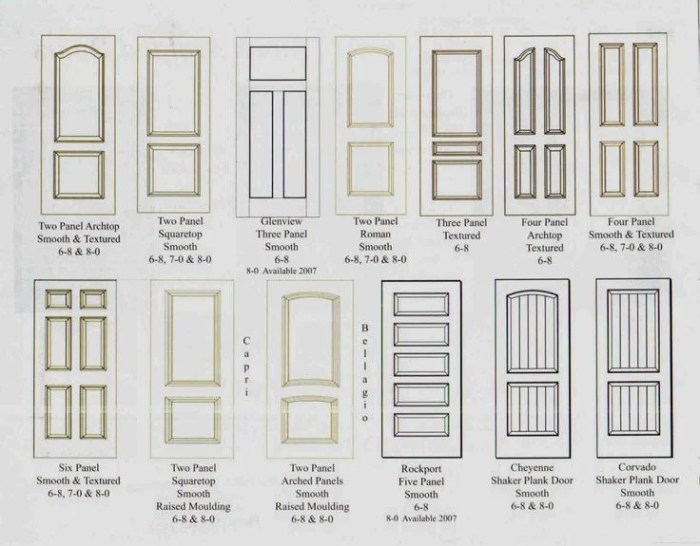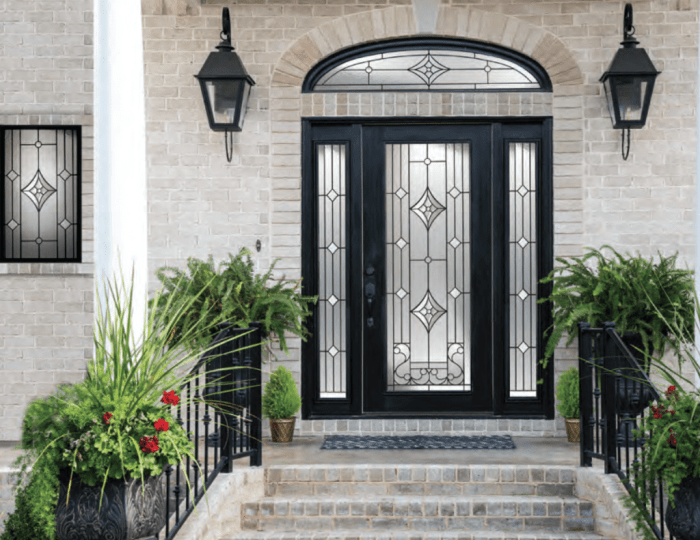International Style Guide: Choosing Doors by Design
Delving into International Style Guide: Choosing Doors by Design, this introduction immerses readers in a unique and compelling narrative, with a casual formal language style that is both engaging and thought-provoking from the very first sentence.
Exploring the essence of door design through an international lens offers a fascinating journey into the world of architectural aesthetics and cultural influences.
Overview of International Style Guide for Doors
When it comes to choosing doors for your home or office, considering an international style guide can help you create a cohesive and aesthetically pleasing design. This guide incorporates design elements from various cultures around the world, resulting in a diverse and unique approach to door selection.
Popular Door Designs
- Japanese Sliding Doors (Fusuma): These doors are known for their simplicity and elegance, often featuring paper panels on a wooden frame.
- Moroccan Carved Doors: Intricately designed with geometric patterns and vibrant colors, these doors add a touch of exotic charm to any space.
- Dutch Half Doors (Dutch Doors): These doors are divided horizontally, allowing the top half to be open while the bottom half remains closed, offering versatility and functionality.
Importance of Cultural Elements
By incorporating design elements from different cultures in door selection, you can infuse your space with a sense of global influence and sophistication. Whether it's the intricate carvings of Indian doors or the minimalist approach of Scandinavian designs, each cultural element adds depth and character to your overall design aesthetic.
Factors to Consider when Choosing Doors by Design

When selecting doors for a space, there are several key design elements to consider that can significantly impact the overall aesthetic and functionality of the area. Different door designs can bring a unique style and character to a room, while also reflecting cultural influences that add depth and meaning to the design choices.
Design Elements to Look for when Selecting Doors
- Material: The material of the door, whether it is wood, glass, metal, or a combination, can greatly affect the look and feel of a space. Each material carries its own unique characteristics that can enhance the overall design.
- Style: The style of the door, such as modern, traditional, rustic, or contemporary, should complement the existing decor and architectural elements in the space. Choosing a door style that aligns with the overall design theme can create a cohesive and harmonious look.
- Color and Finish: The color and finish of the door play a crucial role in tying together the design elements of a room. Whether opting for a bold statement color or a subtle neutral tone, the choice of color can impact the mood and atmosphere of the space.
Impact of Different Door Designs on Overall Aesthetic
- Statement Piece: A unique and eye-catching door design can serve as a focal point in a room, adding visual interest and personality to the space.
- Space Optimization: Choosing the right door design can also impact the functionality of a space by maximizing the use of available area and enhancing the flow of movement.
- Enhanced Ambiance: The design of a door, whether it features intricate details, sleek lines, or minimalist aesthetics, can contribute to the overall ambiance and mood of a room.
Role of Cultural Influences in Door Design
- Symbolism: Doors in different cultures often carry symbolic meanings that reflect traditions, beliefs, or rituals. Incorporating cultural influences in door design can add layers of significance and storytelling to a space.
- Craftsmanship: Cultural influences can also be seen in the craftsmanship and detailing of doors, showcasing unique techniques and artistic expressions that highlight the richness of a particular culture.
- Historical Significance: Doors can be a representation of historical and architectural heritage, with designs influenced by the cultural context of a region or community. Understanding these influences can deepen the appreciation for the design choices made.
Common Door Designs in International Style Guide
When it comes to door designs, different regions around the world have their own unique styles that reflect their cultural heritage and architectural preferences. Let's explore some popular door designs from various international regions and compare their characteristics.
European Door Designs
European door designs often feature intricate details, such as ornate carvings and moldings. These doors are typically made from high-quality wood, such as oak or mahogany, and are known for their elegant and timeless look.
- French Doors: Known for their glass panels and double-door design, French doors are popular for allowing natural light to flow into a room.
- Dutch Doors: These unique doors are divided horizontally, allowing the top half to open independently from the bottom half.
Asian Door Designs
Asian door designs often focus on simplicity and functionality. Sliding doors, such as Japanese shoji doors, are common in Asian architecture and are made from materials like paper, bamboo, or wood.
- Chinese Moon Gates: Circular doorways known as Moon Gates are a traditional Chinese architectural element that symbolizes good luck and prosperity.
- Korean Hanji Doors: Made from traditional Korean paper called hanji, these doors are lightweight and allow diffused light to pass through.
Middle Eastern Door Designs
Middle Eastern door designs are influenced by Islamic art and architecture, featuring geometric patterns and intricate carvings. These doors are often made from heavy wood or metal for added security.
- Moroccan Doors: Known for their colorful tiles and arched shapes, Moroccan doors add a touch of exotic elegance to any space.
- Persian Doors: Elaborately decorated with geometric motifs and calligraphy, Persian doors are a beautiful example of Middle Eastern craftsmanship.
African Door Designs
African door designs vary depending on the region, with each design showcasing unique cultural symbols and materials. From carved wooden doors in West Africa to mudcloth-covered doors in Mali, African doors are rich in symbolism and tradition.
- Zanzibar Doors: These intricately carved doors on the island of Zanzibar feature rich symbolism and serve as a reflection of the island's diverse cultural heritage.
- South African Ndebele Doors: Known for their bold geometric patterns and vibrant colors, Ndebele doors are a striking representation of South African artistry.
Incorporating International Door Designs in Modern Spaces
When blending international door designs with contemporary interiors, it's essential to find a balance between preserving the cultural essence of the design and adapting it to modern aesthetics. Here are some tips to successfully incorporate international door styles into modern architecture:
Blending Traditional and Modern Elements
- Choose a door design that complements the overall style of the space while adding a touch of cultural richness.
- Consider mixing traditional international door materials like wood or wrought iron with sleek, modern finishes like glass or metal.
- Play with color schemes to create a harmonious blend between traditional and modern elements.
Examples of Successful Integration
One example of successfully integrating international door designs in modern architecture is the use of intricate Moroccan-inspired doors in contemporary minimalist homes. The detailed carvings and geometric patterns of the doors add a unique focal point to the space while maintaining a clean and modern aesthetic.
Achieving Balance in Design
- Focus on incorporating international door designs as statement pieces rather than overwhelming the space with too many intricate details.
- Consider the scale of the door in relation to the room to ensure it fits seamlessly into the overall design.
- Use lighting strategically to highlight the unique features of the international door design and create a visually stunning impact.
Final Wrap-Up
In conclusion, the intricate dance between tradition and modernity in door design showcases the beauty of blending global inspirations with contemporary sensibilities.
Essential FAQs
What design elements should I consider when choosing doors?
Key design elements to consider include material, style, and cultural influences for a cohesive look.
How can I incorporate international door designs into my modern space?
To blend international door designs with modern interiors, focus on harmonizing styles and textures for a seamless integration.
What are some popular door designs from different regions around the world?
Popular door designs include Dutch doors, Japanese shoji doors, and Moroccan arched doors, each reflecting unique cultural aesthetics.




